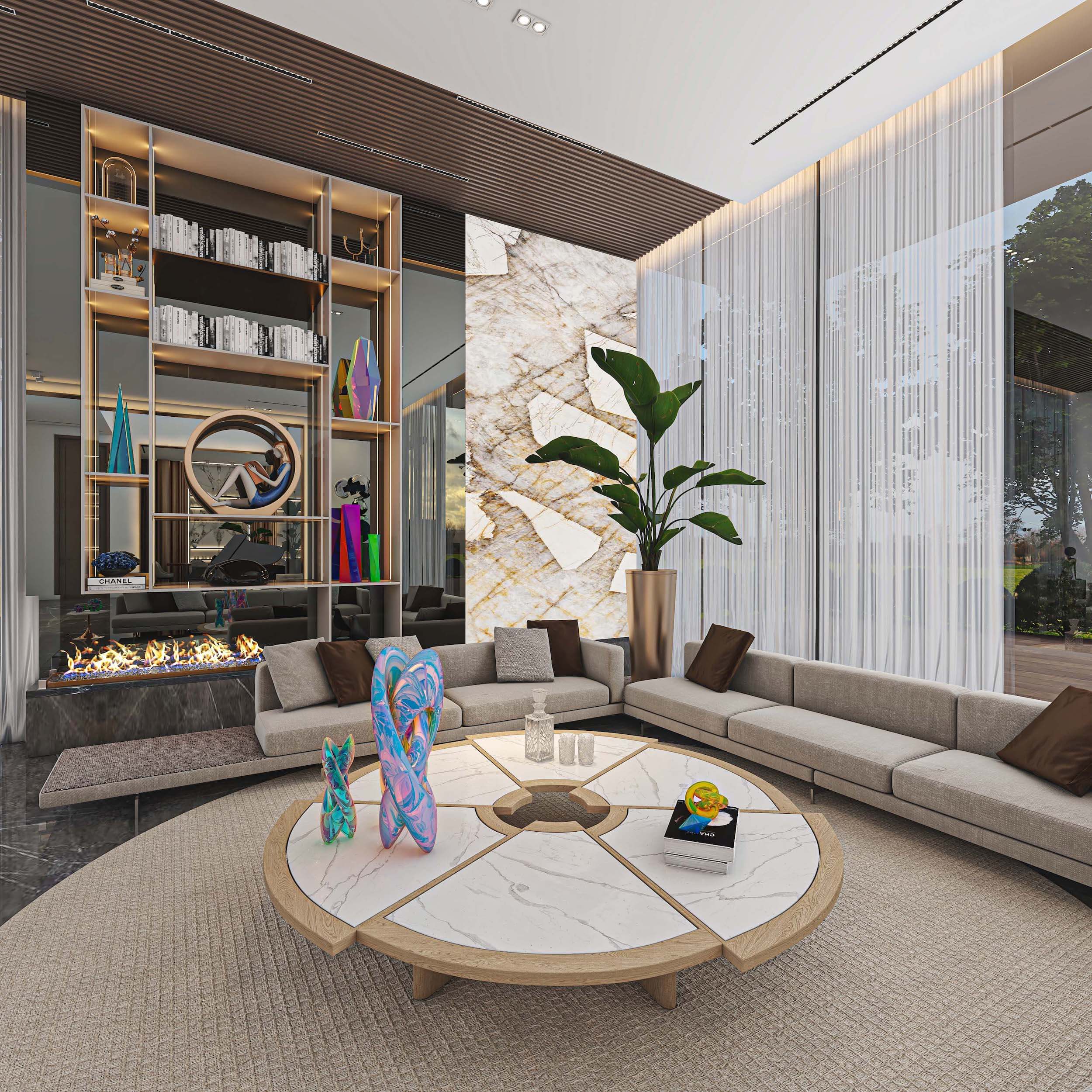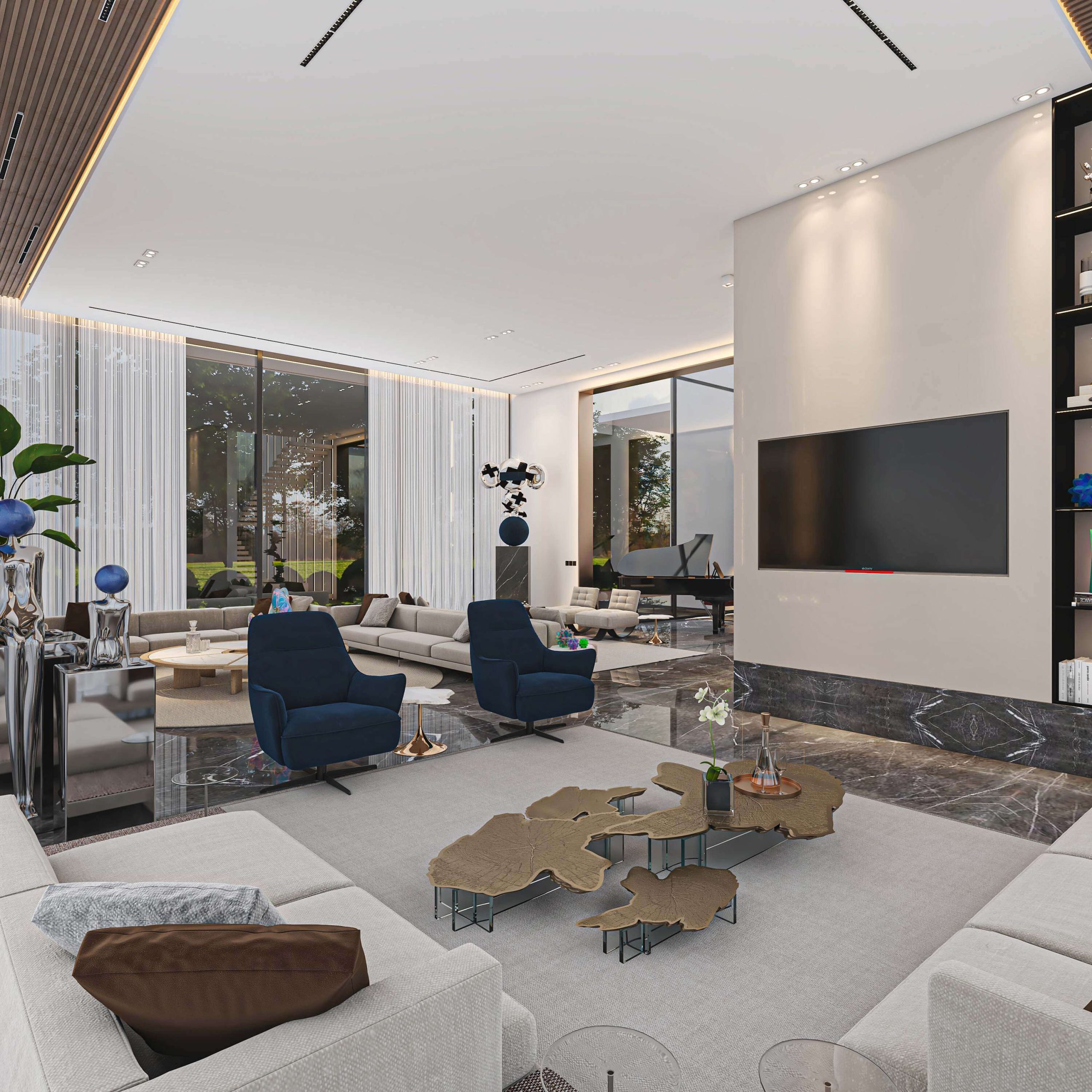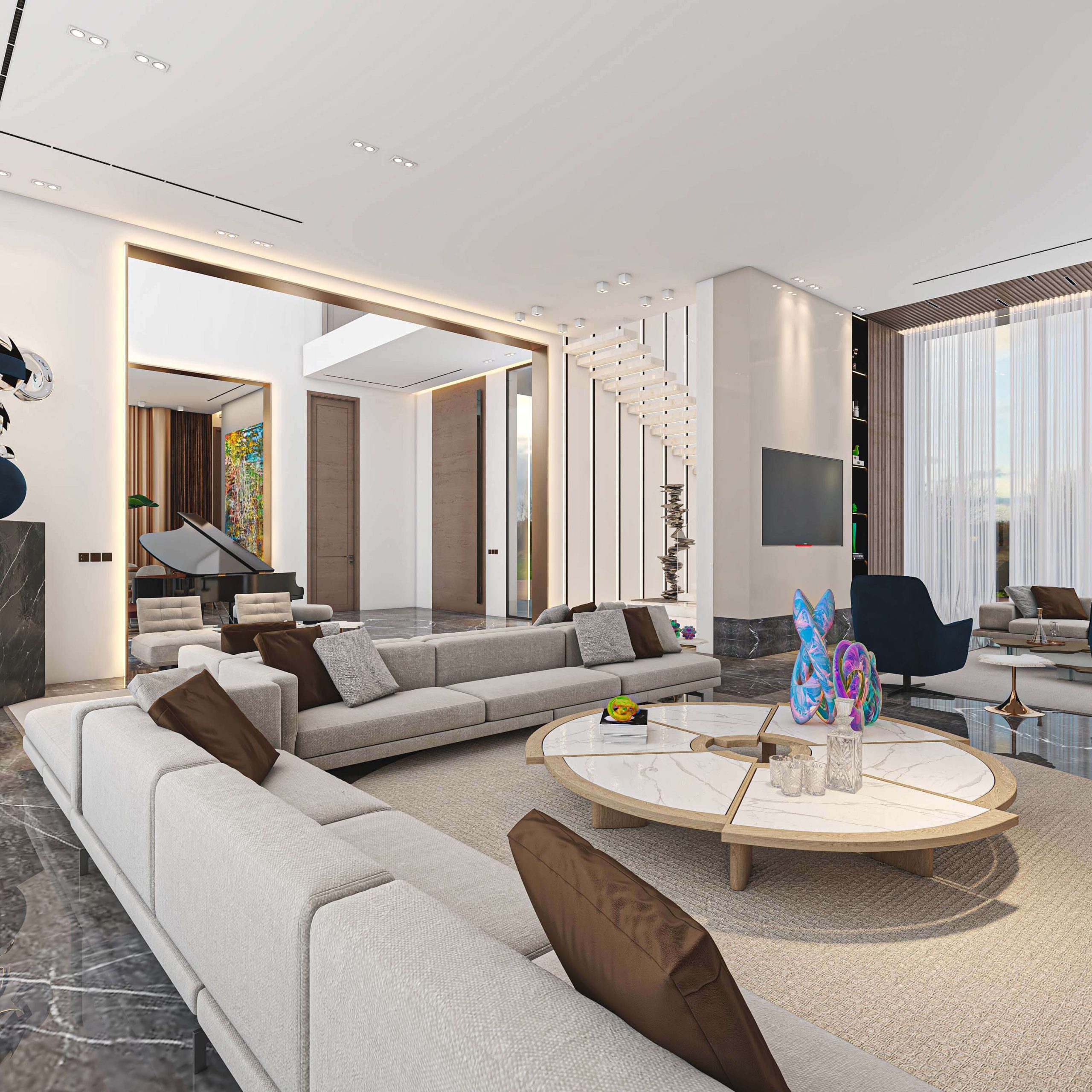Lifestyle
Round, Rectangular, or Ragged: Interior Architect Aly Hammoud and Choosing the Perfect Coffee Table

Saying “yes” to the right coffee table never gets any easier. An essential element of any well-thought-out living room, the choice often comes down to finding the right balance between form and function. Regardless of the designer’s direction with their space, choosing the right coffee table is a critical step toward achieving a cohesive and visually appealing interior design.
Designers must consider several factors when choosing a coffee table. First, the table size should be proportional to the size of the living room. A small coffee table in a large room will look out of place, and a large table in a small room will overwhelm the space. The table’s height is just as important. The ideal height typically falls between 16 and 18 inches, the same as most sofas. A coffee table that is too high or too low will prove uncomfortable for everyday use.

Designers must also consider shape, style, color, material, and space awareness. The table should complement the architecture of the room.
For example, round coffee tables are ideal for square rooms because they create contrast. It’s also important to consider the shape of the furniture, specifically the edges. A round coffee table would be an ideal fit for a living room where the sofa’s edges are also rounded.
The contrast in shapes, however, must be paired with coherence in materials. For example, if the furniture is made from mahogany wood, the table should reflect similar materials and hues. Different materials can be incorporated if the furniture contains metallic elements while considering the room’s overall coherence.
Space awareness is also essential to consider when choosing your coffee table. For instance, rectangular tables fit better in longer and narrower rooms because they don’t take up as much space as round or ragged tables. Suppose your room is spacious and wide enough. In that case, especially if it were an open studio, you can easily fit in round or ragged coffee tables, which are typically more challenging to style and arrange in certain spaces.

Most of the time, the table should match the space’s overall aesthetic. However, mixing elements and styles can help achieve a more dynamic finished product. Consider incorporating a mid-century coffee table in a room with more contemporary pieces or vice versa.
Ragged tables, however, are more sophisticated art pieces. Such tables don’t have a conventional shape, size, color, or edges. They can also have different and unique color patterns that must be mixed and matched professionally with your room’s overall aesthetic.
Of course, you can pick any type of coffee table that suits your needs and preferences in style and aesthetic. You need to make sure, however, that it is the ideal fit for the chosen room, furniture, style, and design. One way to do that is by choosing the right person for the job.

Coffee tables are an essential part of interior architecture. Not only do they function as practical surfaces for drinks and snacks, but they also contribute to the space’s general mood. Interior architects like Aly Hammoud understand coffee tables as powerful tools for tying a room together. They can create a focal point or complement other furniture pieces in the space.
Whether professional or amateur, the right designer should choose the coffee table carefully to ensure it fits seamlessly into the room’s overall design.
Check out Aly Hammoud’s Instagram account for more information.
Lifestyle
Every Life Is a Story: Leigh Witherell’s Art of Capturing Connection

A brief glance across a crowded room. Two strangers pause in quiet recognition before moving on. These are the moments most of us miss, but they are the ones that stay with Leigh Witherell.
Based in Philadelphia, Pennsylvania, Leigh has built her artistic career on noticing what others overlook. As a contemporary figurative painter, she is not interested in spectacle. Her canvas holds something smaller but deeper: the human story inside an instant. For her, painting begins not with a brushstroke but with observation.
She often finds inspiration in strangers, watching a gesture or interaction that sparks a question: What is the story here? That question becomes the foundation of her work. In her studio, she uses digital tools to piece together compositions that stay faithful to that original spark. This part of the process is not fast; sometimes it takes days or weeks before she finds the version that feels right. Only then does she move to canvas, bringing the story to life through paint.
This approach is less about technique than philosophy. For Leigh, a painting succeeds only if it captures the truth of a moment. She sees every work as part of a larger narrative about life, one made up of countless small stories. As she puts it, life itself is a collection of stories woven together, and art is her way of honoring them.
The challenge lies in translating the quiet into something powerful. A fleeting glance or touch has no obvious drama, yet in her hands it becomes a complete narrative. Achieving this demands patience and discipline. Each composition must balance subtlety with emotional weight, and she doesn’t stop refining until that balance feels real. It’s a slower process than today’s fast-moving art world might expect, but it is also what gives her work its resonance.
Her commitment to these understated stories is more than an artistic choice; it’s a statement about values. In an era where attention is often captured by noise, speed, and spectacle, Leigh insists on slowing down and noticing. By turning small human interactions into lasting images, she reminds her audience that connection is built not in grand gestures but in everyday exchanges.

The consistency of this vision has carried her through the challenges that come with being a figurative artist in the digital age. Online platforms can misinterpret her work or restrict its visibility, especially when dealing with themes of intimacy and vulnerability. Yet rather than retreat, she adapts, finding ways to share her vision without compromising her message. Each obstacle reinforces her conviction that artists must remain true to their stories, even when systems make that harder.
What makes her work stand out is not only her patience but also her willingness to use modern tools thoughtfully. She integrates digital editing into her preparation, not as a shortcut but as a way to preserve accuracy. This ensures that when she paints, she is not working from a vague impression but from a carefully considered composition that stays close to the truth of the original moment.
Looking across her body of work, one can see more than portraits or scenes. Each canvas becomes a chapter in a broader book of human connection. They are reminders that what may seem small, a touch, a pause, a glance, can carry extraordinary meaning when we take the time to notice.
Leigh Witherell’s art is, at its heart, an invitation. An invitation to slow down, to look more closely, and to value the quiet threads of connection that stitch lives together. In giving permanence to these moments, she shows us that every life, no matter how ordinary it may appear, is in fact a story worth telling.
-

 Tech5 years ago
Tech5 years agoEffuel Reviews (2021) – Effuel ECO OBD2 Saves Fuel, and Reduce Gas Cost? Effuel Customer Reviews
-

 Tech6 years ago
Tech6 years agoBosch Power Tools India Launches ‘Cordless Matlab Bosch’ Campaign to Demonstrate the Power of Cordless
-

 Lifestyle6 years ago
Lifestyle6 years agoCatholic Cases App brings Church’s Moral Teachings to Androids and iPhones
-

 Lifestyle5 years ago
Lifestyle5 years agoEast Side Hype x Billionaire Boys Club. Hottest New Streetwear Releases in Utah.
-

 Tech7 years ago
Tech7 years agoCloud Buyers & Investors to Profit in the Future
-

 Lifestyle5 years ago
Lifestyle5 years agoThe Midas of Cosmetic Dermatology: Dr. Simon Ourian
-

 Health7 years ago
Health7 years agoCBDistillery Review: Is it a scam?
-

 Entertainment6 years ago
Entertainment6 years agoAvengers Endgame now Available on 123Movies for Download & Streaming for Free
